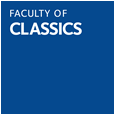Dr Joshua Thomas
Qualifications: BA, MSt, DPhil (Oxon)
ORCID ID: 0000-0001-6353-397X
Link to college page:
I attended state school in Birmingham before coming to Oxford to study Classical Archaeology and Ancient History. After completing my doctorate in 2016, I held the Lavery-Shuffrey Early Career Fellowship in Roman Art and Archaeology at Lincoln College for four years. I then moved to Munich for a two-year Alexander-von-Humboldt Fellowship, before returning to Oxford as Departmental Lecturer in September 2022.
My research focuses on the historical interpretation of the art and visual cultures of the Graeco-Roman world. I am currently working on my second monograph, which will examine the settings and functions of high-grade animal statues during antiquity, from Archaic Greece to Imperial Rome. I am also a member of the excavation team at Aphrodisias in Turkey, where I work on Roman sculpture.
Ancient material and visual culture; Greek and Roman sculpture; Hellenistic art and archaeology; intersection of art and science during antiquity
I have taught the following undergraduate papers: Greek Sculpture, 600–300 BC; Greek Art and Archaeology, 500–300 BC; Hellenistic Art and Archaeology, 330–30 BC; Rome, Italy and the Hellenistic East, c. 300–100 BC; Art Under the Roman Empire, AD 14–337; Texts and Contexts.
Full Publications: Dr Joshua Thomas Publications 2022
Selected Publications:
Forthcoming ‘The Colossal Figural Consoles of the Hadrianic Baths at Aphrodisias’, Istanbuler Mitteilungen 72
2022 ‘The Ptolemy Painting? Alexander’s ‘Right-Hand Man’ and the Origins of the Alexander Mosaic’, Journal of Roman Archaeology 35.1, 306–321.
2021 Art, Science and the Natural World in the Ancient Mediterranean, 300 BC – AD 100, Oxford Studies in Ancient Culture and Representation, Oxford: Oxford University Press.
2019 ‘The Illustrated Dioskourides Codices and the Transmission of Images during Antiquity’, Journal of Roman Studies 109, 241–273.
2018 ‘The Statues of the Cyclops«: Reconstructing a Public Monument from Aphrodisias in Caria’, Istanbuler Mitteilungen 68, 143–172.



